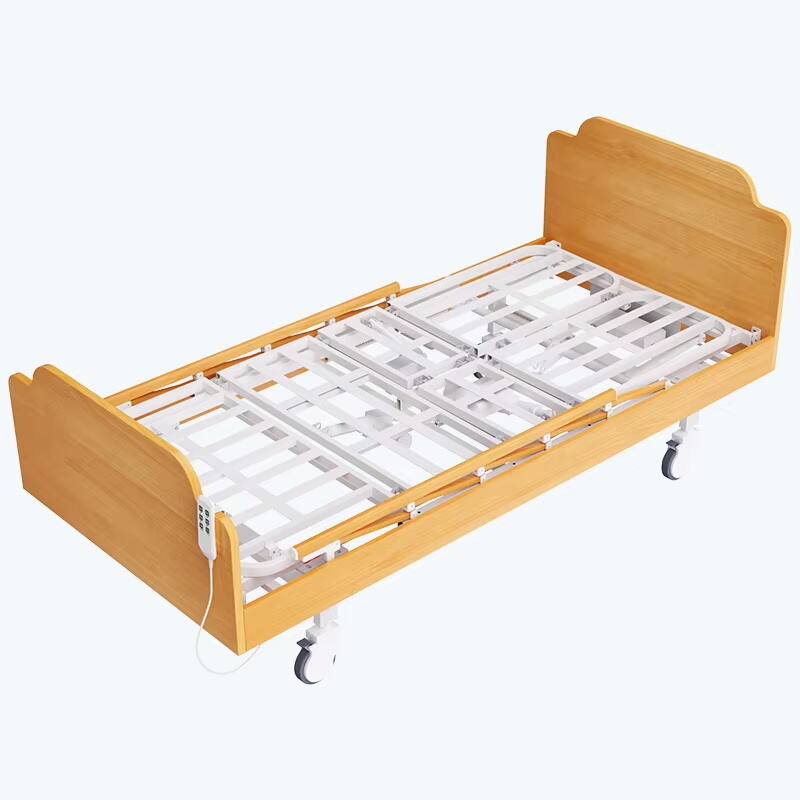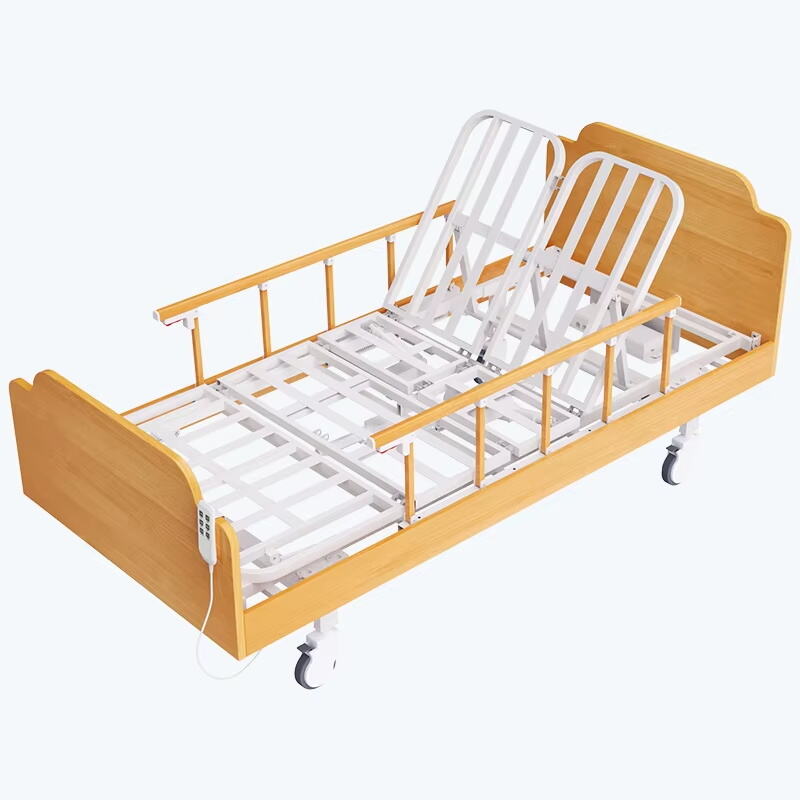Enhancing Comfort and Safety in Medical Environments
In modern healthcare settings, patient comfort and long-term wellbeing are essential. One critical innovation that has significantly contributed to patient care, especially for individuals with limited mobility, is the antidecubitus bed. This specialized bed is engineered to reduce pressure points and prevent the development of pressure sores, also known as decubitus ulcers. Antidecubitus beds are now an indispensable part of care for patients in hospitals, long-term care facilities, and even home care settings.
The antidecubitus bed is designed not only for comfort but also for clinical effectiveness. Patients who spend extended periods in bed are vulnerable to pressure injuries due to constant pressure on certain areas of their bodies. By using an antidecubitus bed, caregivers can drastically minimize this risk. The evolving technology in these beds enhances airflow, redistributes weight, and offers automated adjustments to meet various patient needs.
Key Features of an Antidecubitus Bed
Pressure Redistribution Systems
The defining feature of any antidecubitus bed is its ability to distribute body pressure evenly across the surface. Traditional mattresses tend to concentrate pressure on specific areas such as the heels, hips, and shoulders. In contrast, an antidecubitus bed uses advanced materials and technologies such as memory foam, gel-infused layers, and air cells that alternate pressure to alleviate stress on any single point.
These systems are particularly beneficial in intensive care units where patients may be immobile for extended periods. The beds automatically shift pressure zones, encouraging better blood circulation and reducing the chances of pressure sore development.
Airflow and Ventilation Technologies
Another important feature found in modern antidecubitus beds is enhanced airflow. Some beds are equipped with low-air-loss systems that continuously blow air through tiny holes in the mattress. This feature helps keep the skin dry and reduces moisture buildup, which is a significant contributor to skin breakdown and sore formation.
Air circulation also plays a role in temperature regulation. By keeping the skin cool and dry, the antidecubitus bed enhances overall comfort while minimizing friction and shear forces that may exacerbate skin damage.

Benefits of Using Antidecubitus Beds
Prevention of Pressure Sores
The primary benefit of an antidecubitus bed is its ability to prevent the formation of pressure sores. These ulcers can become serious medical issues if left untreated, potentially leading to infections, longer hospital stays, and even surgery. Antidecubitus beds are especially effective for elderly patients, post-operative recovery, and individuals with spinal cord injuries.
Through consistent pressure redistribution and moisture control, the antidecubitus bed serves as a frontline defense against such complications, allowing for better patient outcomes and reduced healthcare costs.
Improved Patient Mobility and Comfort
Antidecubitus beds also aid in improving mobility by adjusting to different postures easily. Many models include adjustable height, head, and leg positions, allowing for easier transfers from bed to wheelchair and vice versa. The support offered by these beds can help patients recover more quickly and maintain some degree of independence.
Comfort is not just a luxury in healthcare—it is a vital aspect of healing. Patients who are more comfortable experience lower stress levels and better sleep quality, both of which are essential for recovery. An antidecubitus bed enhances patient morale and quality of life during their stay in medical care.
Types of Antidecubitus Beds
Static Antidecubitus Beds
Static beds feature high-density foam or gel materials that are inherently designed to reduce pressure. These are suitable for patients with a lower risk of developing pressure sores or those who are partially mobile. Static antidecubitus beds do not require electricity and are more affordable, making them an excellent choice for home care settings.
Despite their simplicity, static antidecubitus beds provide effective support and are often used in conjunction with repositioning schedules and routine skin assessments to prevent complications.
Dynamic Antidecubitus Beds
Dynamic beds, on the other hand, include systems that actively change the pressure points on a patient's body. These beds often operate using alternating pressure, low-air-loss, or fluidized air technologies. Designed for high-risk patients, dynamic antidecubitus beds are ideal for intensive and acute care environments.
These beds adjust automatically in response to patient movements, ensuring continuous pressure relief. Though they tend to be more expensive, their performance and effectiveness justify the investment, especially in settings where pressure sore prevention is critical.
Materials and Design Considerations
High-Quality Mattress Materials
The effectiveness of an antidecubitus bed largely depends on the materials used in the mattress. High-quality foam with memory retention properties adapts to the contours of the patient’s body, minimizing pressure buildup. Some models incorporate gel layers for better cooling effects.
The mattress cover also plays a vital role. It should be breathable, waterproof, and easy to clean to maintain hygiene. Antimicrobial properties further enhance safety, reducing the risk of infection.
Frame and Adjustability
The frame of the antidecubitus bed must be robust enough to support both the patient and the mattress system. Adjustable frames allow for customized positions that suit medical procedures, patient comfort, and ease of caregiver access.
Height adjustability reduces the risk of injury to caregivers while improving the efficiency of routine tasks such as dressing changes, feeding, and repositioning.
Integration with Modern Healthcare Systems
Smart Monitoring Features
Technological advancements have brought intelligent monitoring systems to antidecubitus beds. Sensors embedded within the mattress can track patient movement, pressure distribution, and even temperature. These smart features notify caregivers in real-time if a patient requires repositioning or if there's a risk of pressure buildup.
Such innovations improve response time and enable personalized care, especially in facilities with limited staff. Automated data collection can also aid in clinical documentation and long-term patient management.
Compatibility with Other Medical Equipment
A well-designed antidecubitus bed should integrate smoothly with other hospital devices, including IV stands, hoists, and monitoring tools. Compatibility ensures the bed does not become an obstacle during emergency interventions or daily routines.
Features like removable side rails, lockable wheels, and wireless remote controls further streamline medical operations while enhancing patient safety.
Maintenance and Longevity
Routine Cleaning and Inspection
Maintaining the antidecubitus bed is essential for both hygiene and functionality. Regular cleaning of the mattress cover and bed frame prevents contamination and extends product life. Some covers are machine washable, while others may require disinfection using medical-grade solutions.
Routine inspection of the mechanical and electronic components ensures that the bed functions as intended. Any signs of wear or malfunction should be addressed promptly to avoid compromising patient safety.
Training for Caregivers
Proper training on the use of antidecubitus beds is crucial. Caregivers should be familiar with the bed’s controls, safety features, and maintenance requirements. Regular workshops or onboarding sessions for new staff can help ensure optimal use.
This training not only prolongs the lifespan of the bed but also guarantees that patients receive the full benefits the bed is designed to offer.
FAQ
What is an antidecubitus bed?
An antidecubitus bed is a specialized medical bed designed to prevent pressure sores by evenly distributing pressure and improving airflow around the patient’s body.
Who should use an antidecubitus bed?
It is recommended for patients with limited mobility, those recovering from surgery, the elderly, and anyone at risk of developing pressure ulcers.
Are antidecubitus beds available for home care?
Yes, many manufacturers offer models suitable for home use, especially static types that do not require electricity and are easy to operate.
How often should the mattress be cleaned or inspected?
It is advisable to clean the mattress cover regularly and inspect the system at least once a week or according to the manufacturer’s guidelines.

